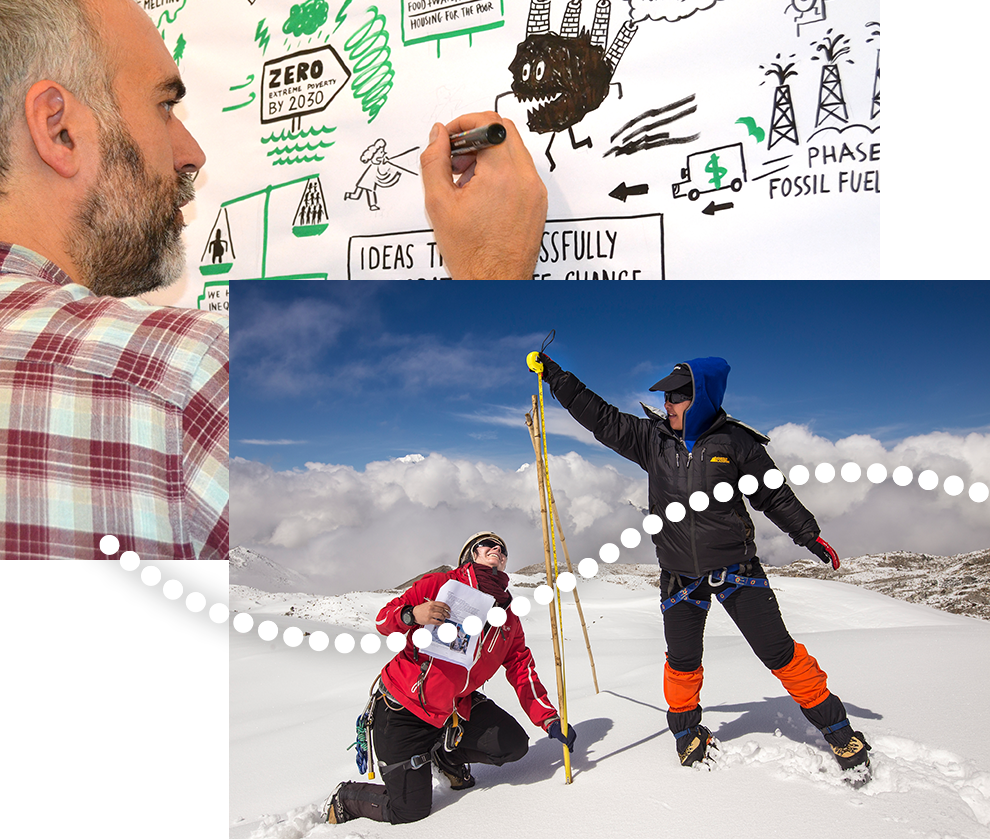Compounding resilience by pursuing global and ambitious adaptation

Summary
A side event at the Bonn Climate Change Conference in June discussed ambition on climate adaptation, the work programme on the Global Goal on Adaptation, and a new t-shirt slogan.
“We need to get a better idea of what the Global Goal on Adaptation is”: Giuliana Torta of the European Commission’s Directorate-General for Climate Action, DG CLIMA, set out the challenge for this event, which aimed to draw out different perspectives on how the Global Goal on Adaptation (GGA) can serve to increase adaptation ambition, and make adaptation around the world more than the sum of its individual, national parts.
No question remained about the need for such ambitious adaptation once Johanna Nalau, lead author of the recent report on impacts, vulnerability and adaptation of the Intergovernmental Panel on Climate Change (IPCC) had summarised the report’s findings: “We see how multiple events occur at the same time, and how their impacts compound,” she said. “For instance, we might have a Category-5 cyclone at the same time as a pandemic, which has consequences for how people can evacuate and react in the aftermath of the cyclone.” She also mentioned compounding effects of heatwaves and droughts, for example in Africa, leading to lower productivity, lower wages, lower food production, and more complex health impacts.
Against this backdrop, reminding us that climate risks are more complex than initially assumed, the event’s theme was much appreciated. “Finally we’re talking about ambition on adaptation,” said Maria del Pilar from CONICET, with all the passion she said she, as a Latin woman, always spoke with: “We’re talking about ambition on adaptation, and that’s good news.”
“We know where we are, but not how far we need to go”
The discussion evolved to outline multiple difficulties in obtaining clarity on the GGA and ambition on adaptation, from formulating adaptation needs relative to the temperature goals of the Paris Agreement, to agreeing indicators to measure progress towards meeting those needs, to ensuring coherence with existing measuring frameworks and policy processes.
“We know where we are and where we need to go”, namely towards increased global and systemic resilience, said Annett Möhner of the Secretariat of the UN Framework Convention on Climate Change (UNFCCC). But, she conceded, while the point of departure and the direction of travel were clear, the destination was not, nor were the means and ease of travel: “How far we need to go on adaptation depends on how well we do on reducing emissions and mitigating climate change,” she said, “and how we travel and how easy it is depends on the means that we have to do it.”
Towards outlining the Global Goal on Adaptation
Panellists, discussants and members of the audience were in broad agreement that the GGA should not entail extra reporting, or targets set from the top down. “The national and local level are key and a cornerstone of a Global Goal on Adaptation,” Ms. Torta stressed. Emilie Beauchamp of the International Institute of Environment and Development (IIED) emphasised how the Global Goal on Adaptation, as the “new kid on the block” under the UNFCCC process, could engage local communities and vulnerable people and be country-driven: “This is our adaptation story together,” she said.
But, said Ms. Torta, a truly ‘global’ goal by definition also had to transcend borders and be transboundary in nature. For Adaptation Without Borders’ Director Katy Harris this meant that a Global Goal on Adaptation must take into account that “we live in an interconnected world, where a threat in one place can easily ripple out across countries and continents, cascade from one sector to another, disrupt and destabilise global systems and markets, and undermine just and sustainable development.” Broadening our understanding of climate risk to include risks that are transboundary in nature, she argued, was a necessary first step to then also broaden our understanding of adaptation.
A locally anchored goal with global elements that leads to compounding resilience
On the question of how the GGA could be anchored locally and nationally and yet be global in ambition, Thibyan Ibrahim of the Maldives offered concrete thoughts: Elements of the GGA should be global and reflect the transboundary nature of climate risks, for instance with regard to financial and other support to implement adaptation, and to collective action.
A vision then emerged on how an operational GGA could help to transform the incremental, slow and uneven adaptation seen so far. The head of the Adaptation Fund, Mikko Ollikainen, referenced a study that showed how communities that had been supported to increase their resilience to climate change were also better equipped for other challenges. In effect, resilience could compound in similar ways to risks.
The idea of compound resilience offered an exciting, positive and ambitious vision of adaptation, more so than the current narrative on adaptation, said Russel Miles, Director for Climate Adaptation and Resilience Negotiations with the Australian government, and added: “I’m going to make a t-shirt with that slogan: Compounding resilience.”

Comments
There is no contentYou must be logged in to reply.